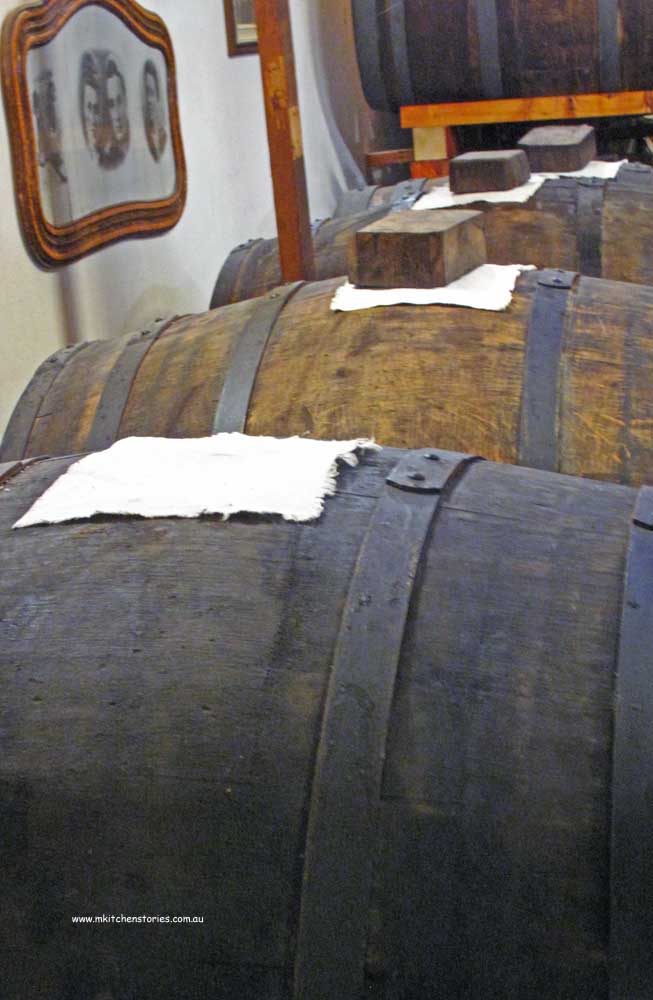 Most people love balsamic vinegar and I guess most people are confused when it comes to buying it. There is nothing straight forward about it…at all. Balsamic is an artisan product, much like wine or bread or chocolate you will find some producers pouring their heart and soul into the family business and then you will find the others. The others is what we need to sort out, so that you can work out what to buy. Yes, there are different kinds of balsamic vinegar, different grades and different methods of making it. You will see a $3.99 one on the shelf in the supermarket and a $59.00 one in the deli. Here’s a guideline to know just what you should be looking for when you buy a bottle.
Most people love balsamic vinegar and I guess most people are confused when it comes to buying it. There is nothing straight forward about it…at all. Balsamic is an artisan product, much like wine or bread or chocolate you will find some producers pouring their heart and soul into the family business and then you will find the others. The others is what we need to sort out, so that you can work out what to buy. Yes, there are different kinds of balsamic vinegar, different grades and different methods of making it. You will see a $3.99 one on the shelf in the supermarket and a $59.00 one in the deli. Here’s a guideline to know just what you should be looking for when you buy a bottle.
There are roughly 3 grades of balsamic with a diverse array of qualities within those categories.
First what is it Balsamic Vinegar ?
The authentic artisanal “Aceto Balsamico Tradizionale” is not vinegar in the usual sense. Traditional Balsamic is made in the Emilia-Romagna region of Italy, specifically the towns of Modena and Reggio Emilia. If it is balsamic it is made with Italian Trebbiano grape juice. If it is “tradiizionale” they must be from this region only. First of all this juice is reduced or cooked down to a “must” . This is a crucial element of ANY balsamic. The “must” is then aged for a minimum of 12 years, in wooden casks to produce a dense sweet and sour syrup with intense flavours of caramel, oak, raisin, cherry and much more. This is the category of balsamic where there is no compromise. To make a traditional balsamic there are many rules and regulations. From beginning to end the process is overseen by a consortium, a government body, who will test at various stages, monitor the conditions under which it is made and allow it to be stamped with the DOP ( Protected Designation of Origin) label and seal.
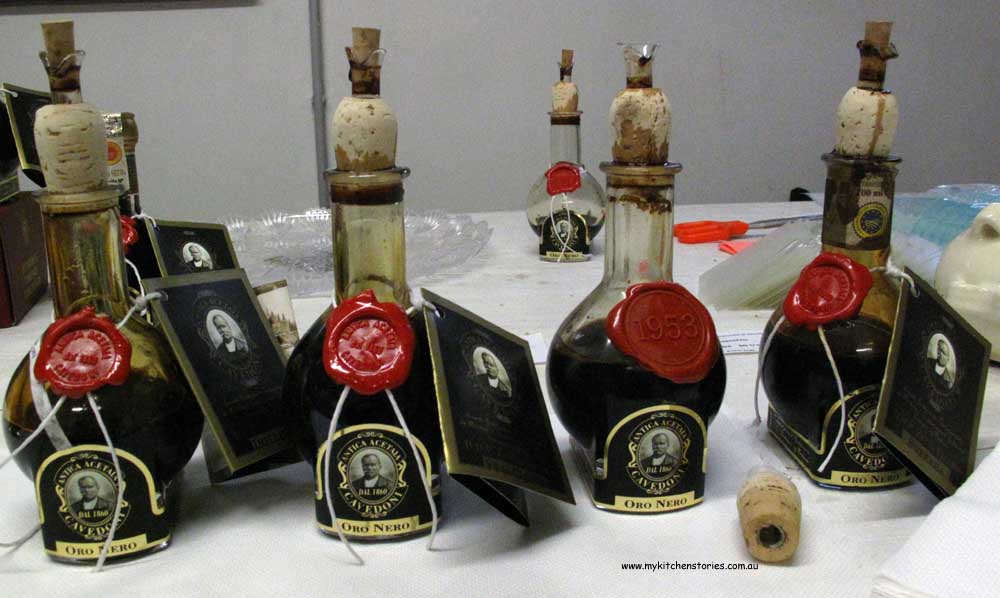
Real balsamic is aged slowly and under surprisingly harsh, fluctuating conditions
The balsamic is aged in a series of barrels known as a batteria, each of decreasing size and made of various woods imparting different flavours and scents. Each year (called a decanting) a portion, usually about 10% is taken from the smallest barrel. This small extract is then ready to be bottled. The liquid is then replaced by 10% of the barrel immediately next to it, and so on down the line. The largest is refilled with reduced fresh must and the aging begins again.
In addition, the traditional barrels are kept in an attic or similar. Here, in this region the hot dry summers are followed by cold winters and the fluctuating temperatures are essential for the vinegar to ferment and evaporate and gather natural yeasts and flavours from the insides of the different barrels. The barrels are open at the top to encourage evaporation and are covered with a cloth to keep out dust and insects. Each barrel has it’s own little horde of bacteria, waiting to help the fermentation and flavouring process.
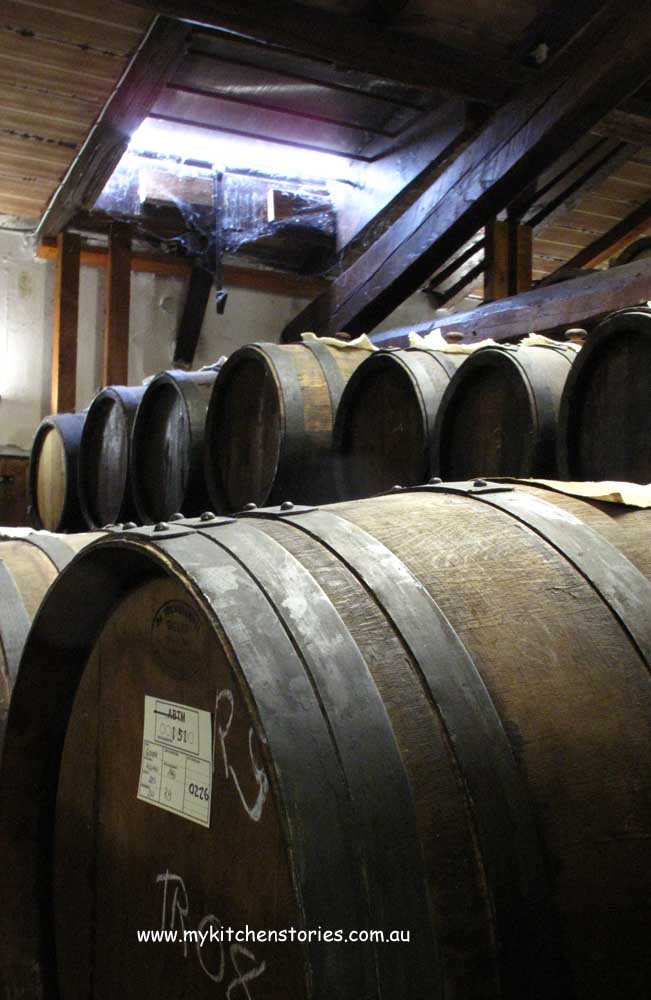
You are probably wondering, like I did, how they can keep track of the age of the balsamic after all that decanting. Well that is determined by the consortium who taste and determine an appropriate grade. Age is no longer written on labels by law of the consortium, they are classified as standard 12 then up to 25 decantings and then older. In Reggio Emilia and Modena different grading colours are used (!!) but, all you need to know is that they will have the DOP seal on each bottle. The higher quality Balsamics will be thicker and darker and there will never be anything other than grape must on the ingredient list.
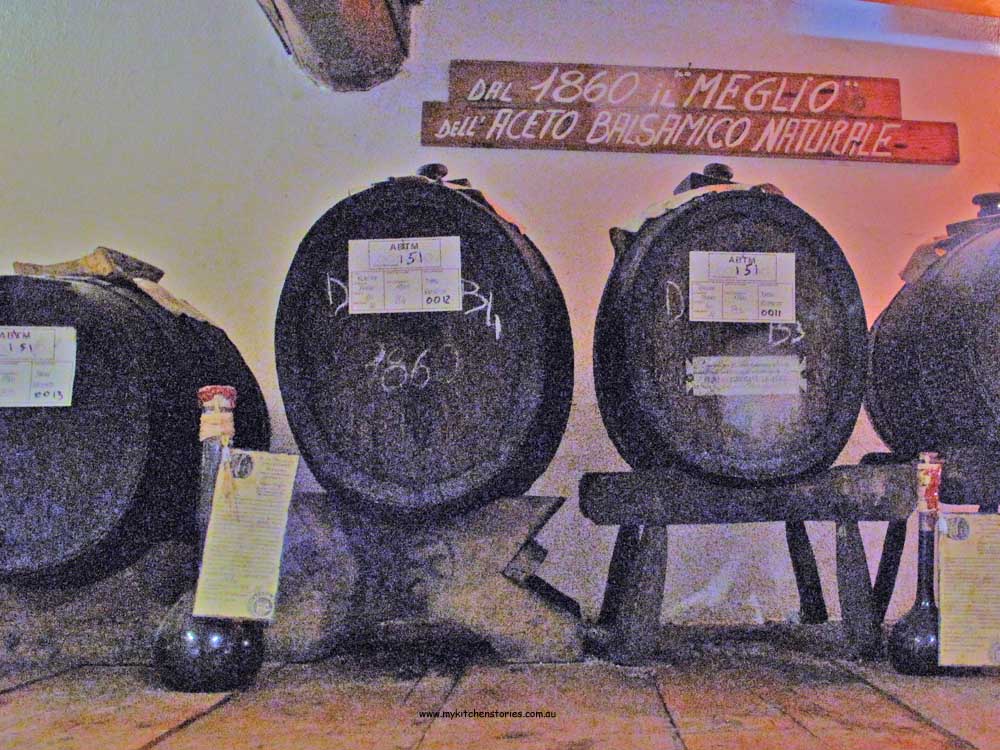
Traditional balsamic is sold in wax sealed tulip shaped bottles with identifying numbers. These bottles can be incredibly expensive and will set you back hundreds of dollars.
This vinegar isn’t for cooking or salad dressings, and even if you had enough money to splash it around in such a way, it would be frowned upon. This is for adding only as an enhancement (or drinking in tiny amounts). It is for drizzling onto risottos, meats, cheeses, pasta and desserts like fruit, panna cotta, gelato and zabiglione.
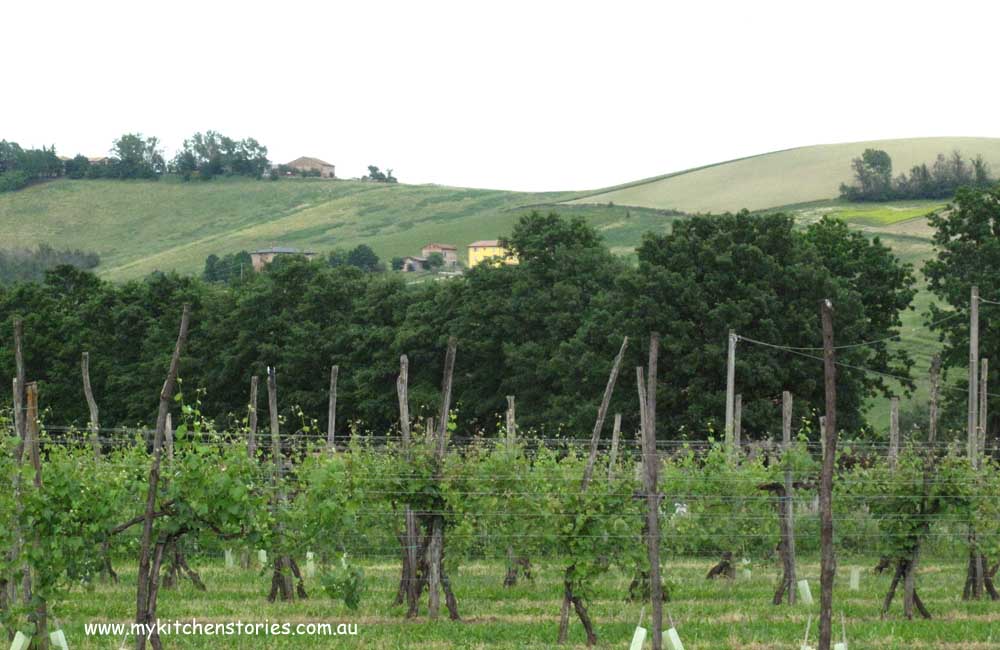
What’s next?…this is where it gets confusing…
Up next is the Condimento category. This is where the broad spectrum of balsamic possibilities starts. It’s also most likely the area you would buy in, if you wanted a very good balsamic but couldn’t afford a “tradizionale”. A vinegar in this section may be traditionally produced in the way that the ones above are, but the producers may not have met the standard for maturity acceptable for the traditional. The producer may have decided that the flavour would be better with a little wine vinegar added or they may have decided to bottle a little before the 12 year time line. Maybe they have followed all of the method standards but may be outside of Modena & Reggio Emilia. There are a lot of reasons and there are a lot of variations. Unfortunately, “condimento- condiment” is not a protected name and it can be found on inferior products too.
What to look for to get the best for your money.
A condimento will not have a DOP stamp, but it should have an IGP stamp ( protected geographical indication)-a qualitative safeguard identifying a products region, recipe characteristics and production techniques. The stamp is in a circle shape in blue or gold or with a circle of stars. It may also carry the seal of the Consorzio di Balsamico Condimento, a new body set up to monitor condiment grade products. Once again let the ingredients list be your guide. There should be little but grape must and a little wine vinegar, preferably mentioned in that order. If there is more wine vinegar or it is the first ingredient, taste and consider for yourself if you like the taste and price. They will often have a family name and address as this grade is more often produced by small family operations, just like the traditionale is. A good one will not be too cheap, maybe $30 upwards.
Both the DOP “traditionale” and IGP condimentos are dark in colour and more syrupy. However, “traditionale” is always sweeter, less acidic and has more depth of flavour and made in a distinctive bottle..
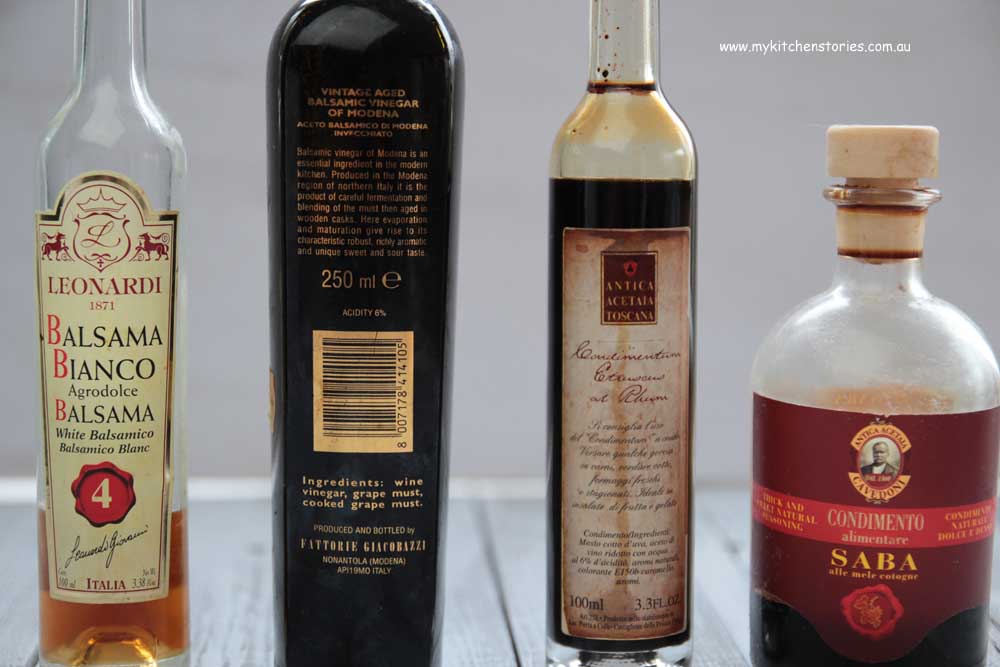
And then there is….?
Balsamic vinegar of Modena, IGP or just Balsamic vinegar of Modena. These vinegars can be industrially produced, but still have some rules. For bottles with an IGP rating, this guarantees that the product is made from grape varietals typical of Modena, though the grapes can be grown outside Modena, the vinegar needs to be processed IN Modena. This style of balsamic was originally produced to keep up with world demand and involves cooking wine vinegar and “musted” juice made from traditional grapes in vats, then aging in wooden barrels, for up to two months. The whole process is quick, skipping the fermentation and slow aging. It may contain thickeners, sugar or caramels and up to 50% wine vinegar. The quality and price can vary depending on the balance of ingredients. The word “aged” can appear on an I.G.P. balsamic label if the product has matured in wood barrels for more than three years. Again a label check will determine the percentage of each ingredient. This doesn’t have to be a bad style of balsamic. Just choose carefully. An IGP rating will determine if it is real. ” Balsamic of Modena” can be written on any bottle made with the most tenuous link to Italy and the region, be careful here. These balsamics are used for salads , sauces and just generally for cooking with.
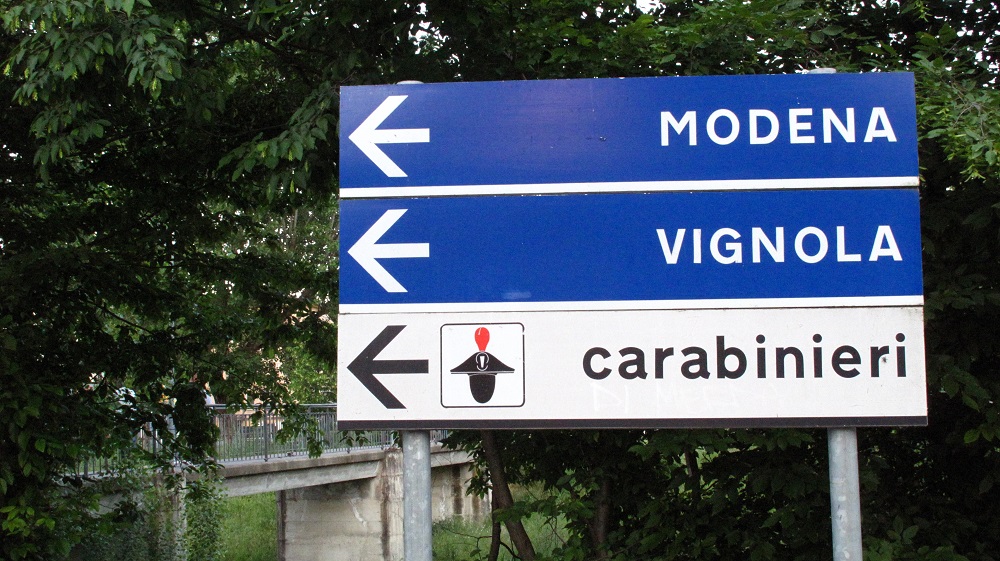
The Impostors
Like most things in life balsamic has it’s imitators. Some vinegars labeled “balsamic”, and found in most countries, may be made with red, white, cider, or wine vinegar that has had sugar, thickeners and colourings added. You will find some of these vinegars claim to be made in Italy however, without an IGP stamp the ingredients could come from any where at all to be quickly assembled and sold to supermarket chains. The label “made in Italy ” is not enough to ensure any kind of authenticity. This will be very acidic and watery and a saddening example of a tradition that is thousands of years old.
What about White Balsamic?
Again similar circumstances apply to white balsamic. The juice of Trebbiano grapes is reduced under pressure so that it doesn’t colour, then white wine vinegar is added. Some producers age in barrels and others simply use stainless steel vats. White balsamic is rarely left to age for longer than a year. It is fresh and sweetly acidic and is perfect for salad, sauces, and glazes .
How else can I use balsamic other than salads?
In slow cooked dishes and soups The flavours in slow cooked dishes can become a bit stewy and flat towards the end, so add a couple of Tablespoons of balsamic dark or white to finish.
As a syrup. Balsamic can be reduced with a little sugar to make a great glaze or sauce for fruit. It also makes a great base for preserves to go with cheeses and meat. Add some cherries or raisins to 1/2 way reduced balsamic and continue to reduce till syrupy
In savoury Jams and Vegetables. Add balsamic to savoury jams such as onion or shallot or drizzled onto tomatoes before very slowly baking ( 50-100C). The vinegar will caramelize as the tomatoes dry out
Dipping A slurry of olive oil, balsamic and salt and pepper is heaven with bread or even vegetables
Marinades Using balsamic vinegar in marinades can bring a depth of acidity and colour that lemon and sugar can not.
In Sorbets balsamic added to fruits for sorbet is a great idea. It can cut sweetness but also adds great depth to berries
Mixed with pomegranate molasses. It makes a thick and incredibly tangy sauce additive that goes with Lamb and Duck.
Tips
- Read the label. This is the most important point. The bottle may be beautiful and the price maybe high but what is on the ingredient list?
- Ask for a taste and buy what you love.
- Determine what you want to use it for and then buy accordingly
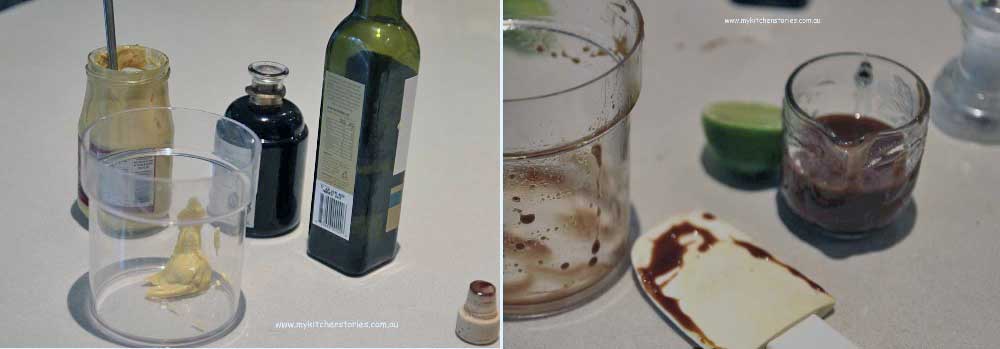
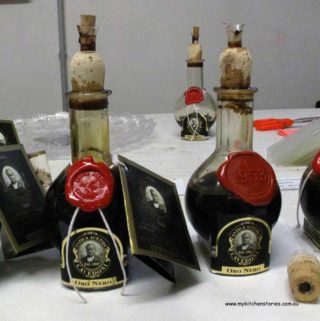
Balsamic Dressing
Ingredients
- 2 teaspoons dijon mustard
- 2 tablespoons balsamic (mine was very thick and sweet)
- 5 tablespoons Extra Virgin Olive Oil
- 1 tablespoon Lime or lemon juice
- (If your balsamic is quite acidic add a Tablespoon of honey to taste.)
- fresh pepper
- Add salt after tasting (dijon is salty)
Instructions
- Shake the jar till emulsified!
- Taste and add more salt or honey or lime or lemon.
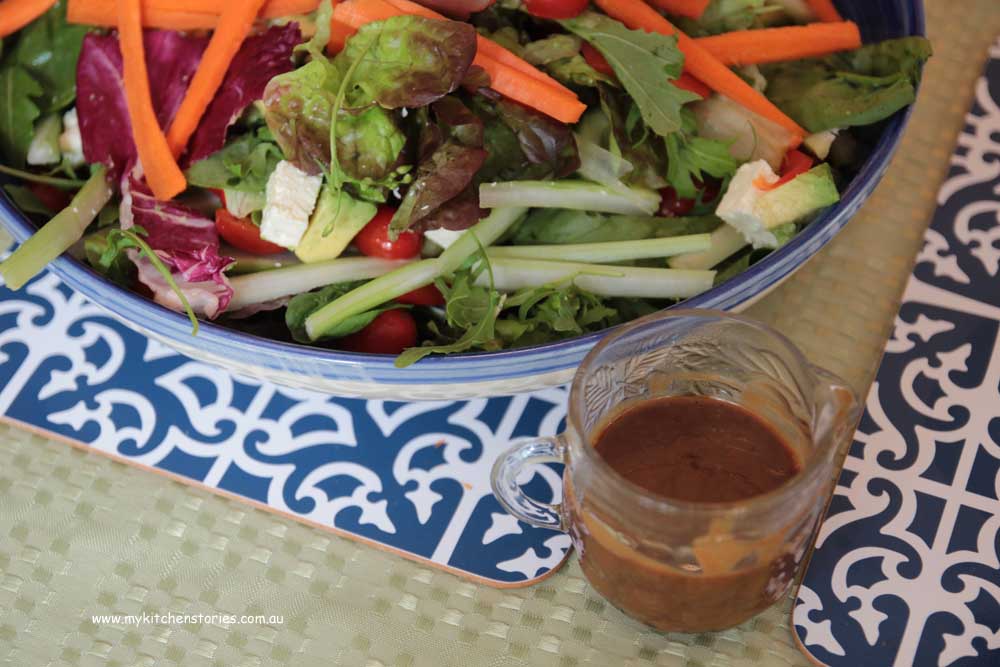


This is so required! I have been searching for good balsamic ever since I landed in Sydney. I don’t want to pay an arm and a leg for it. I’ll leave that for when I can travel to Modena! But there must be something available here! Where do I buy good balsamic vinegar here?
Hi Aparna
Hi there. I am not sure if you are in Sydney.
Yes you could try Lario in Waterloo: http://www.lario.com.au or Simon Johnson providore- Alexandria or https://www.simonjohnson.com/ Paesanella in Marrickville, Fourth village providore in Mosman. They will all have some good choices of balsamic vinegar since you can’t get to Modena right now. One day I do suggest you do though as there are lots of producers you could visit and quite a few great restaurants in that town!
If in Melbourne you could try Essential Ingredient in Prahran
Yaay!!! Thank you so much! I am in Sydney, so this info is so helpful! Europe is on the radar, just waiting for the skies to open!
Excellent review to give a succinct and useful understanding of balsamic vinegar. Easy to work with and be guided by.
Thanks Francis
Wow, how informative. I had no idea that putting in a bottle of balsamic at the supermarket was so complicated in terms of history, process and authenticity. Thanks for teaching me something new!
Tania, I really learned a lot from this informative post. I love balsamic vinegar, though I never buy the really “good stuff.” I just get a “decent” one. Looking forward to shopping for my next bottle with my newfound knowledge!
I had no idea this was such a complex area! Thanks for the guide 🙂
Ooow, I’m so excited to find this post! Thanks for sharing it via SBB! I love it!
Great post, thanks Tania. I suspect a lot of people really don’t have a clue when it comes to true balsamic.
I have a couple of very special bottles that I bought in Italy, tucked away in my pantry.
Such an in-depth post, hun! Thanks for sharing…I’m bookmarking this! xo
This is so detailed and informative, Tania. I do love balsamic and it’s horrific to think that a few years ago I used to think anything labelled ‘balsamic’ was in fact, ‘balsamic’. I’m so excited and grateful for the lovely bottle you gave me xx
I received a beautiful bottle of balsamic vinegar the other day as a gift. I know! Imagine having a friend like that! I think you made this salad dressing recipe for me.
Thank you my lovely friend.
An excellent resource, really good! Thanks for sharing.
G’day Great post Tania and always enjoy learning something new! Sharing today as think there is a lot of confusion surrounding balsamic vinegar!
Cheers! Joanne
This is such a great guide! I remember when a friend and I went to a foodie shop in Vancouver, Canada one rainy afternoon, and a worker there gave us an impromptu lesson in balsamic vinegar, complete with taste-testing. Before that day I had NO idea of what a good balsamic tasted like. I was in heaven. 🙂
I had no idea what was involved in making balsamic, so thanks much for all the info. Going to bookmark this post for sure.
thanks for this post, I was actually wondering at the difference of all the types of balsamic vinegar today!
This is a GREAT guide!!
Super informative! Thank you for clarifying all those grey areas surrounding Balsamic & co